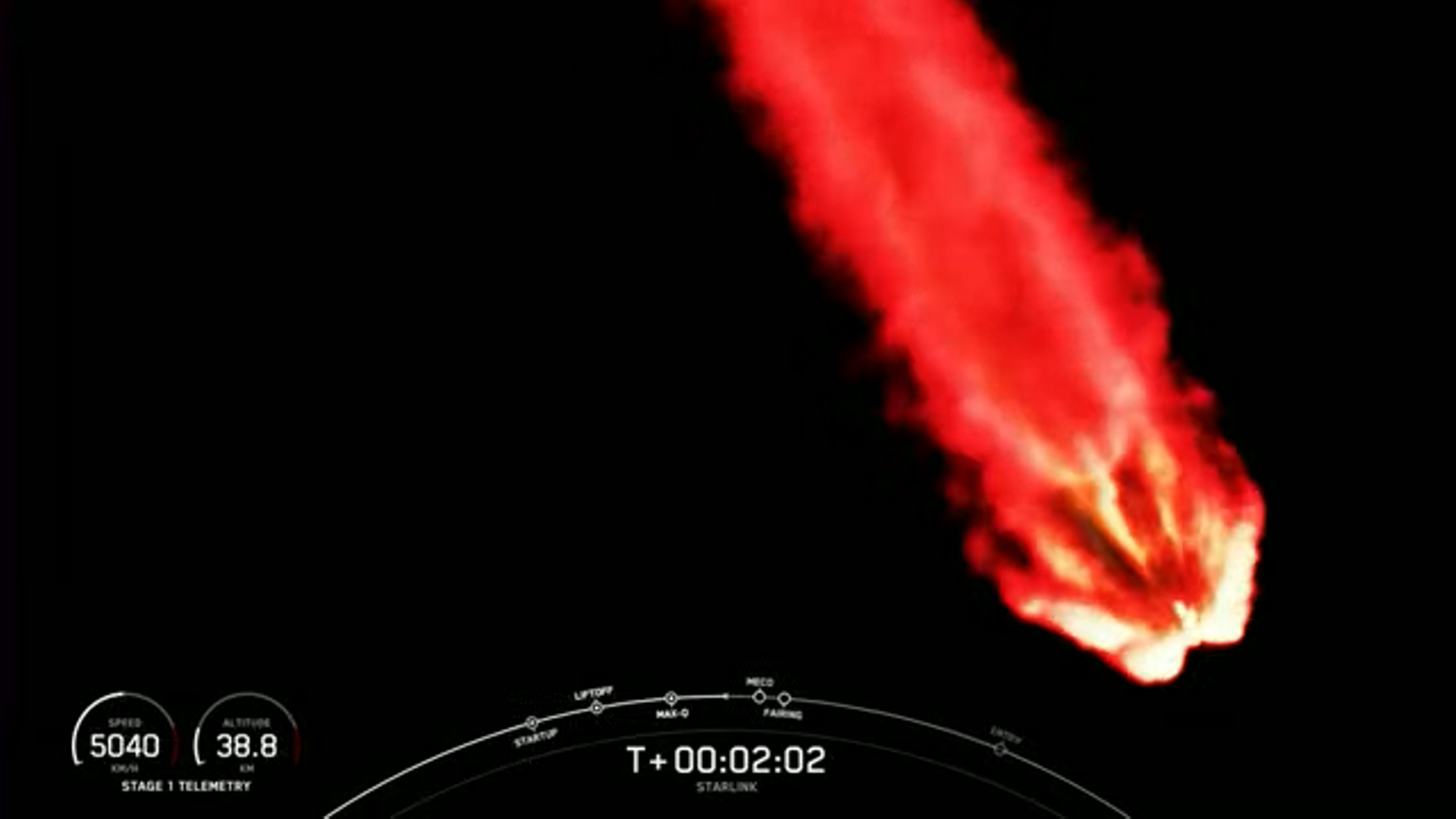
Under near-perfect pre-dawn skies, a seven-times-used Falcon 9 booster roared uphill early Thursday, laden with 56 Starlink internet communications, bound for low-Earth orbit. Seasoned veteran B1069—making her third launch of 2023 alone—rose from storied Space Launch Complex (SLC)-40 at Cape Canaveral Space Force Station, Fla., at 3:31 a.m. EDT, on the first of two T-0 points for today.
Contrary to last week, when an expendable Falcon Heavy met with two days of delay on account of poor weather along the Space Coast, this morning’s flight proved charmed, with Mother Nature pledging a 95-percent likelihood of acceptable conditions. Only a slight risk of violating the Cumulus Cloud Rule, it seemed, stood in B1069’s way.
“A weak surface boundary that is currently moving across Central Florida is bringing in a reinforcing push of cooler and drier air across the region,” explained the 45th Weather Squadron at Patrick Space Force Base in a Wednesday update. “There is some upper-level moisture associated with the boundary and this is allowing some cirrus clouds to move across Central Florida.
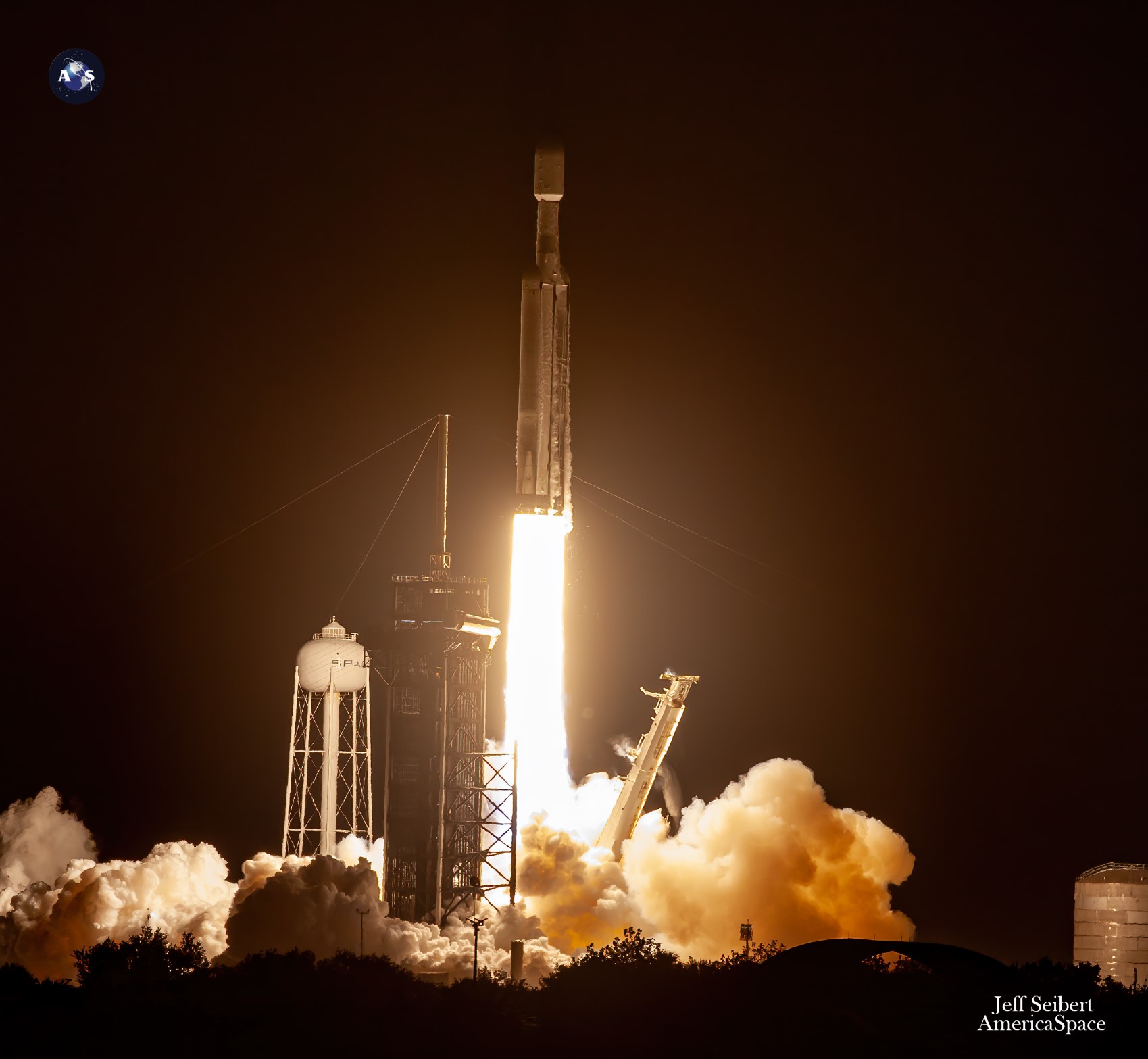
“Expect only a small chance for cumulus clouds and a chance for upper-level clouds,” the 45th continued, adding that a similar forecast was expected for Friday’s backup launch try. Two T-0 points existed for Thursday’s opening launch attempt: a first at 3:31 a.m. EDT and a second at 5:12 a.m. EDT, with three more opportunities in the wee hours of Friday.
B1069 becomes the fourth Falcon 9 core to have logged a third launch in 2023 alone, following a pair of previous flights in early February and on St. Patrick’s Day. Those missions passed a pair of significant milestones: the first marked the 200th fully successful mission for the Falcon 9 fleet, whilst the second helped establish a new record of only four hours and 12 minutes between a pair of SpaceX launches.
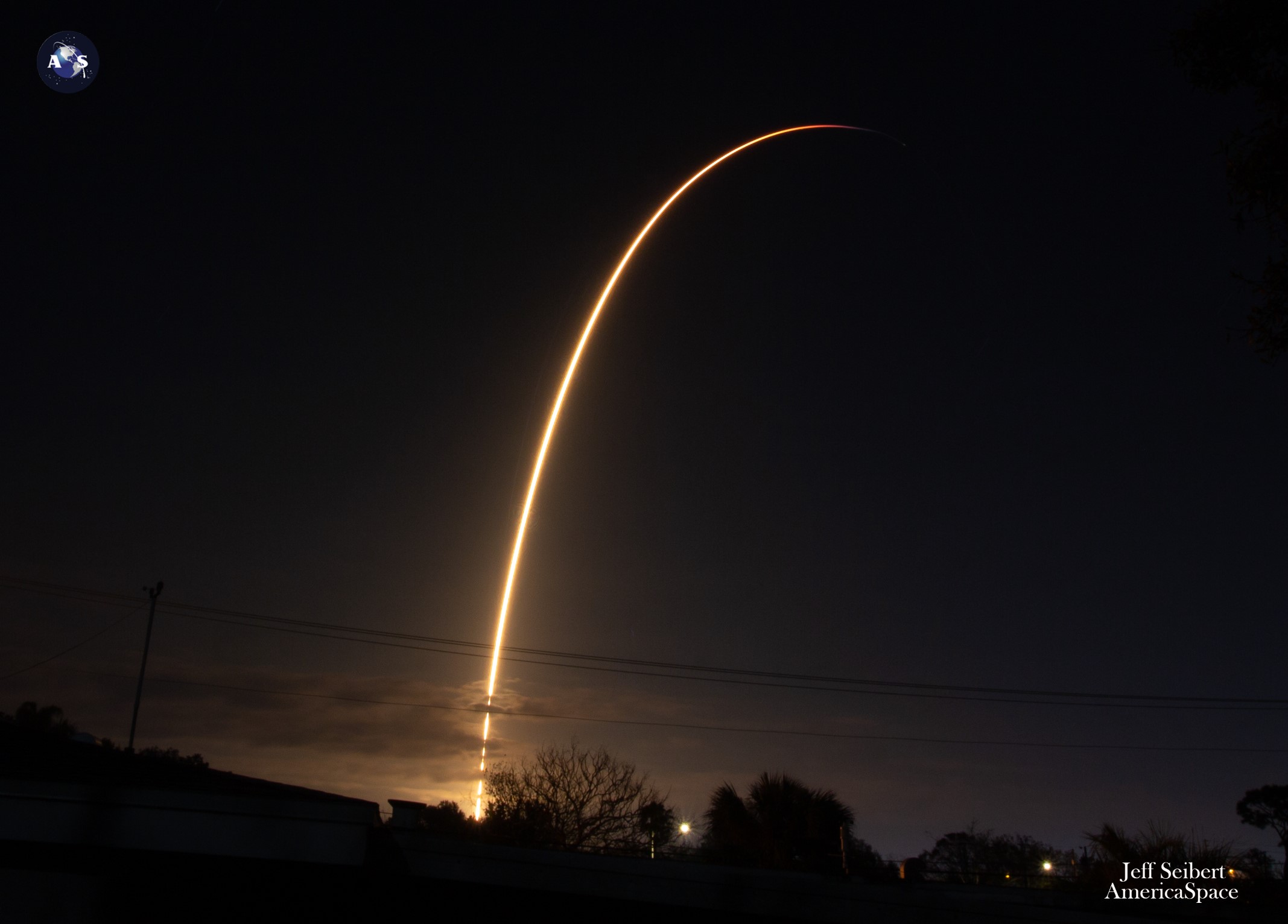
However, B1069’s early adventures proved somewhat less stellar. She entered the fleet back in December 2021 but was almost lost in a hair-raising Autonomous Spaceport Drone Ship (ASDS) touchdown at the close of her maiden voyage. This necessitated substantial repairs—including a brand-new suite of Merlin 1D+ first-stage engines—before B1069 re-entered service to log three missions in the second half of last year: emplacing 54 Starlinks to orbit in August, Eutelsat’s Hotbird 13F geostationary communications satellite in October and 40 broadband satellites in December for London, England-based OneWeb.
Kicking off the first launch of what is expected to be a busy May for SpaceX, B1069 powered into the darkened Florida sky, right on Thursday’s first T-0 point. Two and a half minutes later, her job complete, she separated from the Falcon 9 stack and pirouetted to a picture-perfect touchdown on the deck of the ASDS, “A Shortfall of Gravitas”, sitting about 410 miles (660 kilometers) offshore in the Atlantic Ocean.
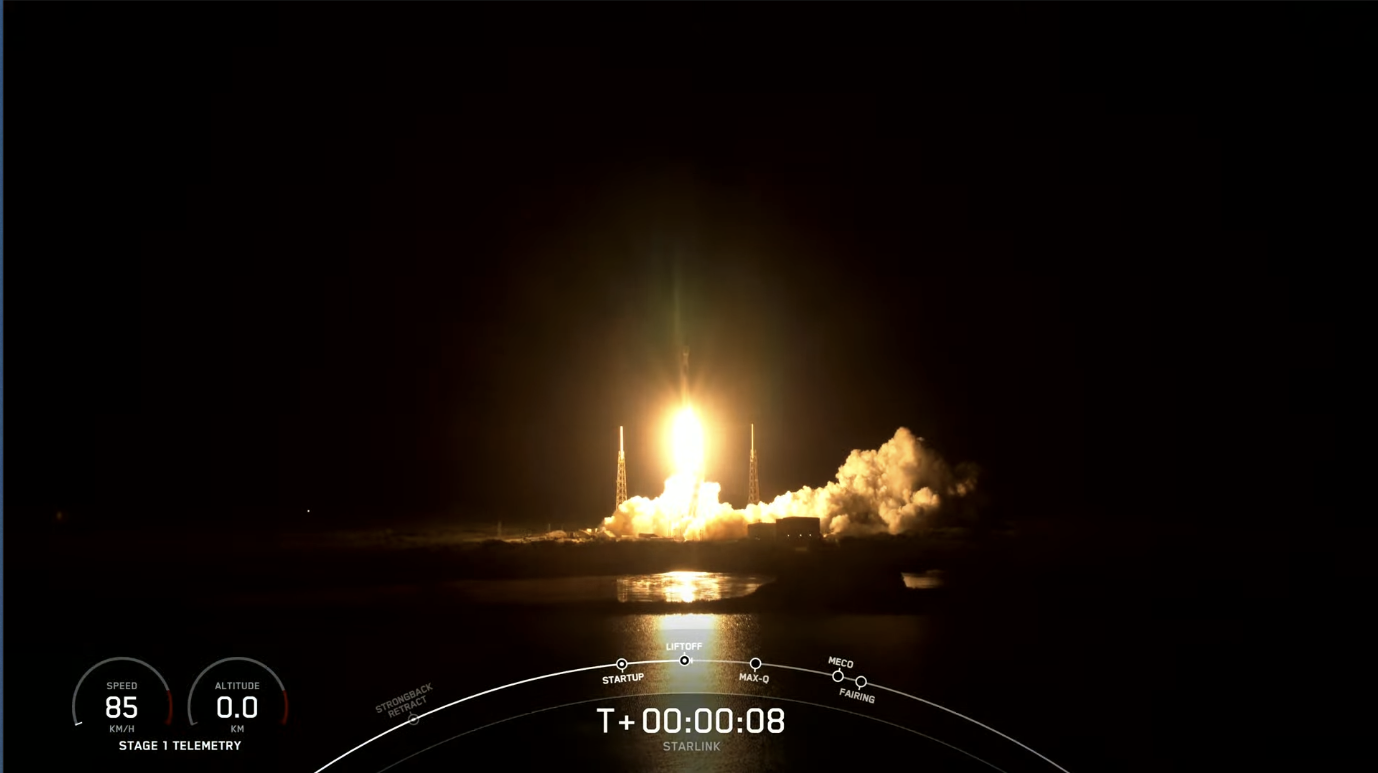
The baton then passed to the second stage, which executed a standard six-minute “burn” to lift the 56 Starlink satellites into orbit. Deployment of the stack occurred a little over 64 minutes after launch and brings the total of these flat-packed, low-orbiting communications satellites lofted so far in 2023 to 674, of which little over half have flown from the Space Coast and exactly 300 from Vandenberg Space Force Base, Calif.
Since May 2019, more than 4,300 production-design Starlinks have been launched into orbit, facilitating high-speed and low-latency internet provision across more than 50 sovereign nations and international markets spanning North and South America, Europe, Asia, Oceania and Africa. In the last few weeks alone, Haiti, Ecuador and El Salvador have officially signed up to Starlink.
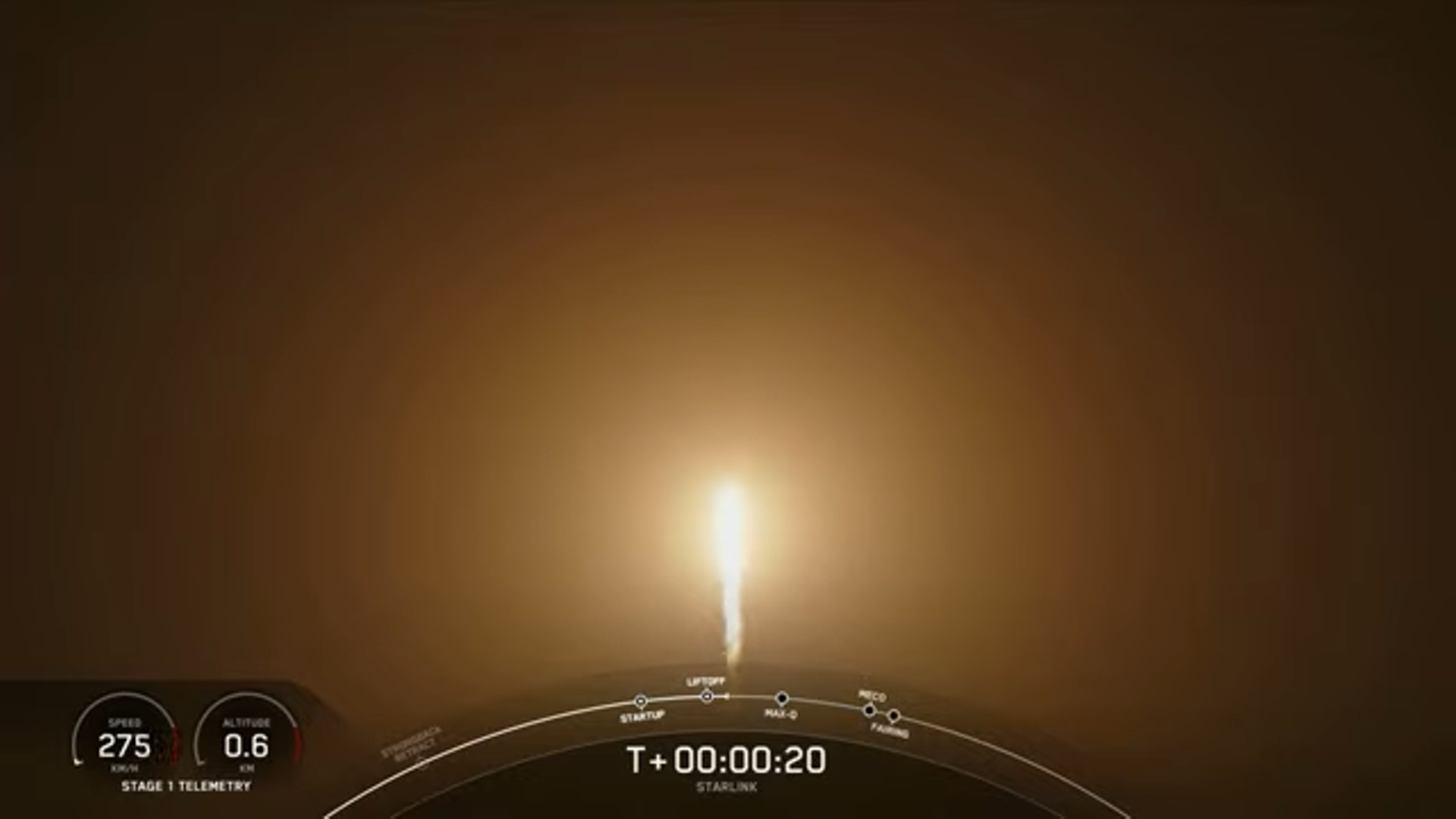
With this morning’s flight complete, SpaceX heads into a busy May, to top an already triumphant first quarter of 2023, which has so far seen 27 Falcon 9 and a pair of Falcon Heavy missions, averaging a launch every 4.2 days from its portfolio of sites on the East and West Coasts of the United States. Since January, the Hawthorne, Calif.-based organization has seen its first eight-launch month, set a new record for the shortest interval between a pair of flights and completed the first fully integrated test flight of a Starship/Super Heavy “stack” out of Starbase in Boca Chica, on Texas’ southernmost tip.
Looking ahead, a group of missions—including the crew-carrying Ax-2 flight to the International Space Station (ISS), flying on behalf of Houston, Texas-based AxiomSpace, Inc.—are set to head for orbit this month. Ax-2, commanded by former NASA Chief Astronaut and America’s most flight-seasoned spacefarer, Peggy Whitson, was previously slated to fly No Earlier Than (NET) 10:43 p.m. EDT on 8 May, but has since slipped until later in the month, on account of delays to last week’s Falcon Heavy mission from historic Pad 39A at Florida’s Kennedy Space Center (KSC).
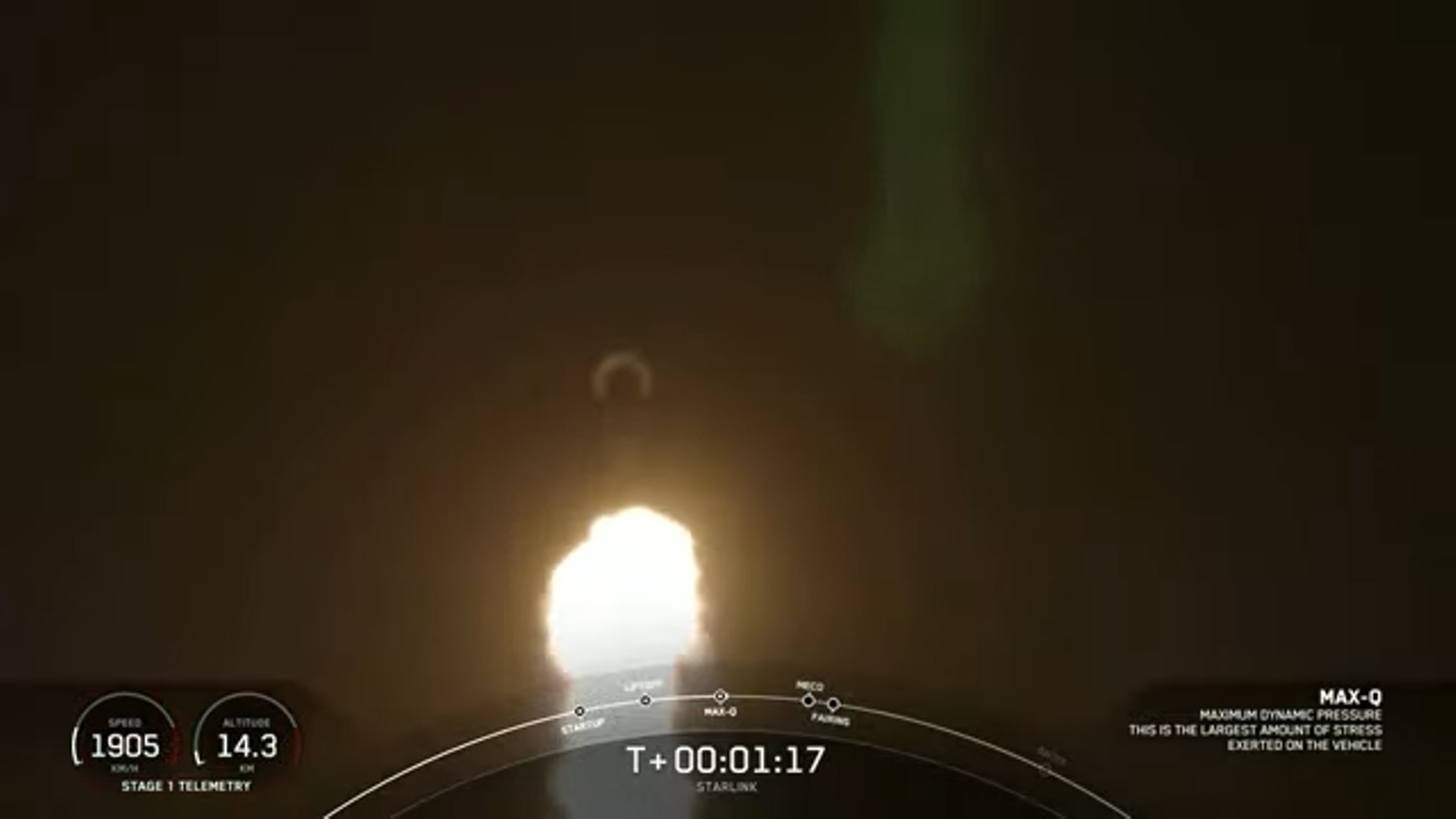
Efforts by SpaceX to deconfigure the pad following its Falcon Heavy duty and reconfigure it for “single-stick” Falcon 9 operations have reportedly pushed the Ax-2 launch deeper into May, with a specific NET date yet to be determined. “While the #Ax2 launch is no longer planned for 8 May,” AxiomSpace tweeted yesterday, “our team is working closely with @NASA & @SpaceX to identify upcoming launch opportunities.”
As previously reported by AmericaSpace, Ax-2 will be commanded by Whitson, who logged three long-duration expeditions to the ISS between June 2002 and September 2017, securing records for the greatest number of female Extravehicular Activity (EVA) hours, as well as becoming the first female station commander and achieving the highest number of days spent in space (665) by any American. Joining her for the planned 14-day Ax-2 mission will be airshow pilot, athlete and motorsports endurance racer John Shoffner and Saudi Arabia’s Ali Al-Qarni and Rayyanah Barnawi.
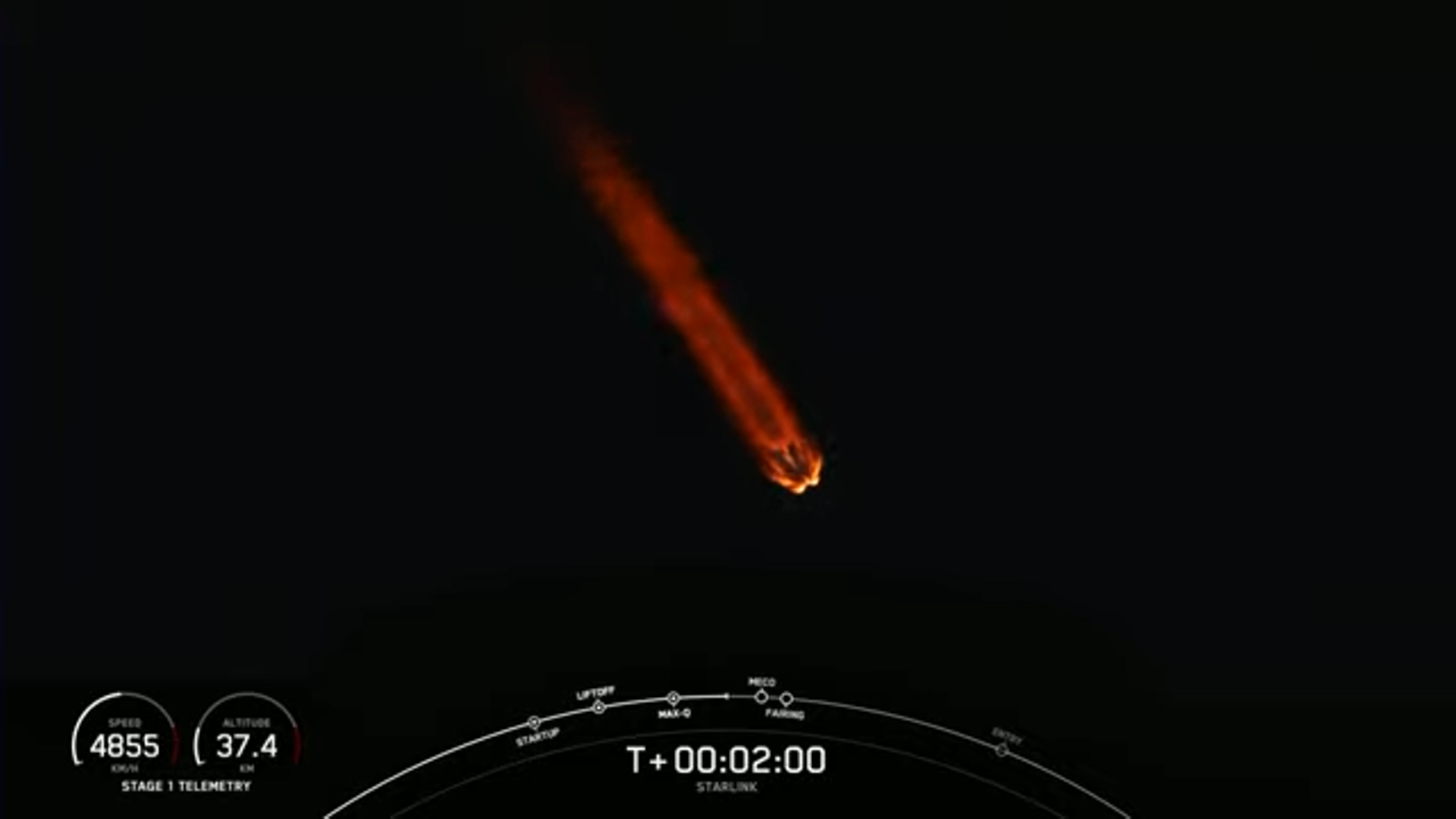
Before that, both the East and West Coasts are expected to rattle to as many as three more Falcon 9 missions in the coming days. As early as Monday and Tuesday of next week, as-yet-unidentified boosters are set to rise—the first from Vandenberg’s Space Launch Complex (SLC)-4E, the second from the Cape’s SLC-40—with drone ship landings anticipated for both flights.
Also on SpaceX’s manifest from Vandenberg is a mixed-payload mission carrying five ground-spares for Iridium NEXT’s global mobile communications network and 16 OneWeb satellites. In early April, the OneWeb payload departed the factory in Florida, bound for Vandenberg, for what is expected to be SpaceX’s fourth launch of these broadband-providing satellites after three earlier missions last December, January and March.
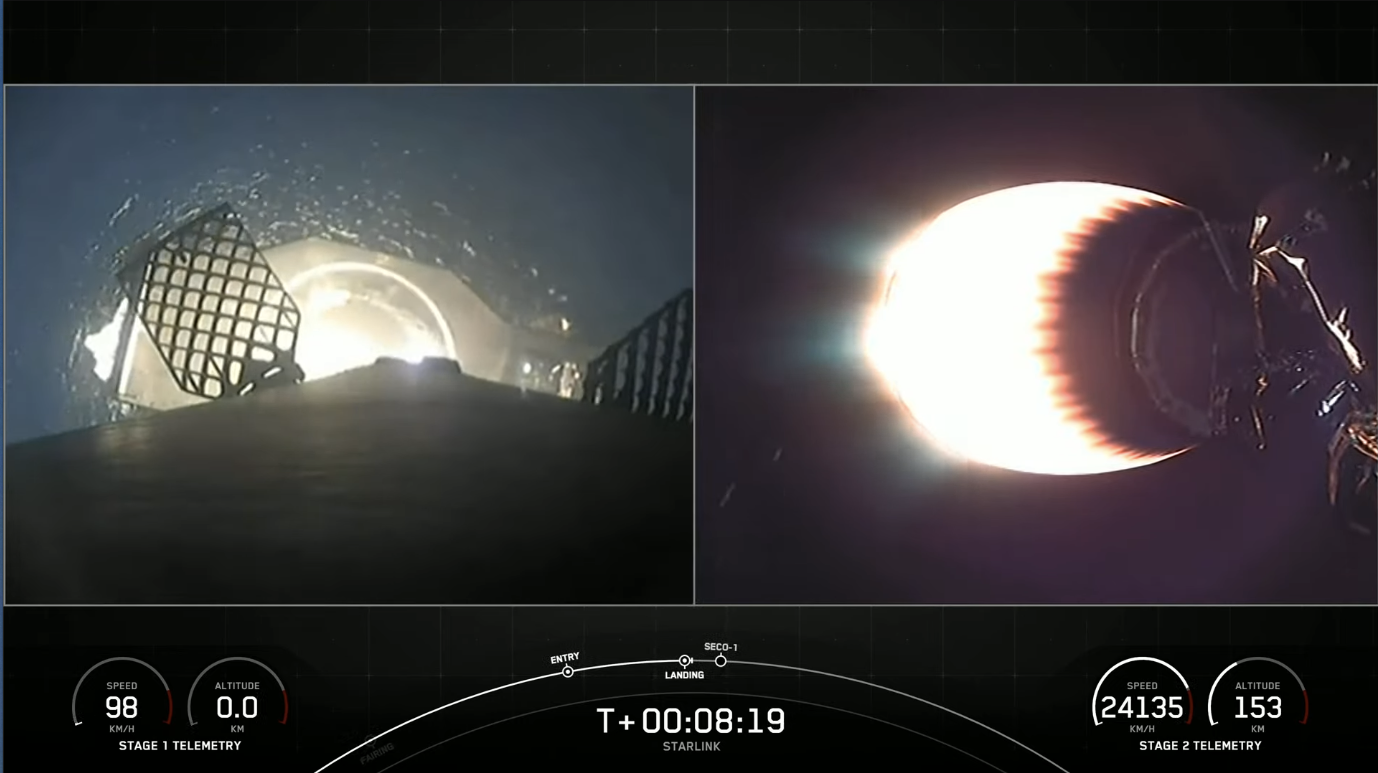
And the five Iridium NEXT birds make this the ninth total mission that SpaceX has flown for Iridium, following eight previous flights out of Vandenberg between January 2017 and January 2019. Those missions delivered a grand total of 75 Iridium NEXT satellites.
“The spare satellites have no utility to us on the ground,” explained Iridium CEO Matt Desch, in remarks made last September. “We built extra satellites as an insurance policy and with SpaceX’s stellar track record, we look forward to another successful launch, which will position us even better to replicate the longevity of our first constellation.”
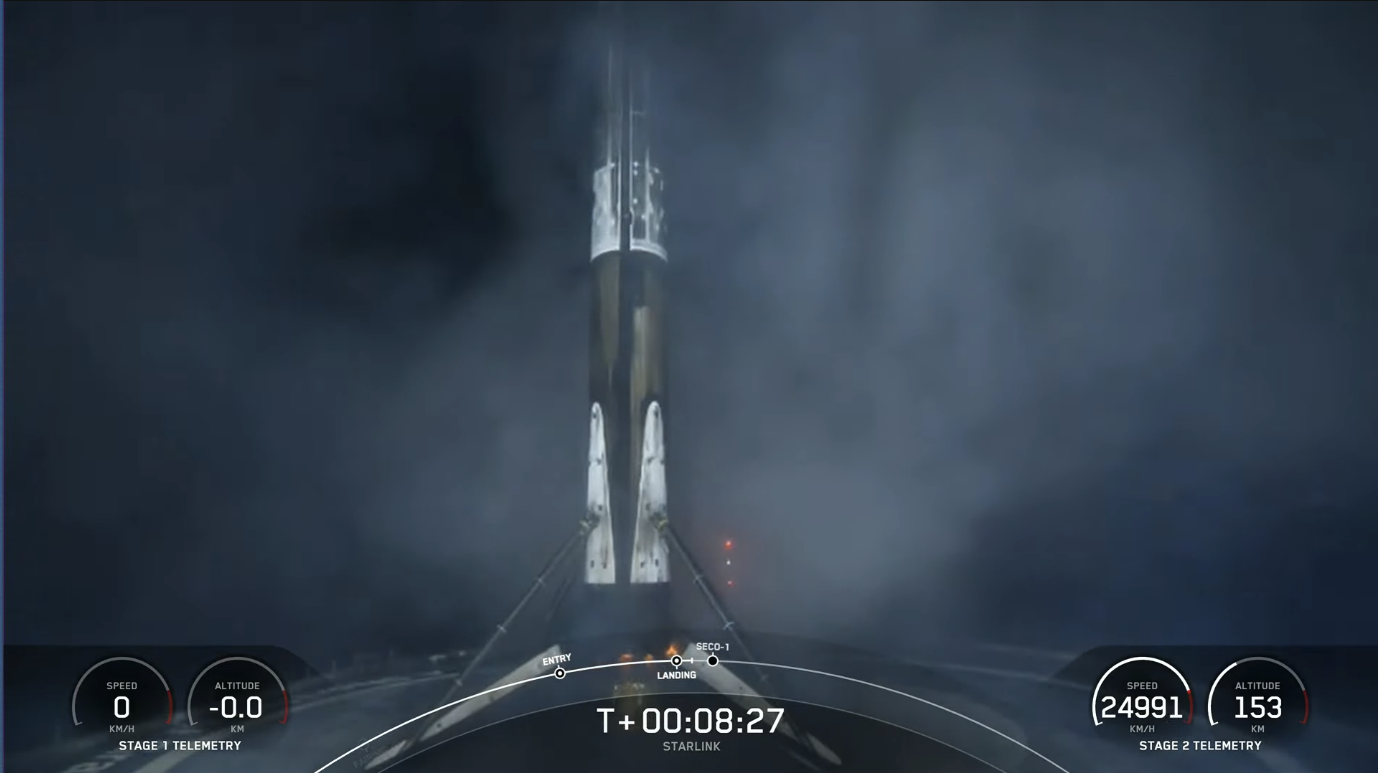
Added to SpaceX’s list of launches for May is Arabsat 7B, a large communications satellite for Saudi Arabia, to be delivered on the first leg of its trek to geostationary altitude and an orbital “slot” at 26 degrees East longitude. Built by Airbus, with contracts having been awarded back in August 2020, the satellite—also known as “BADR-8”—weighs almost 10,000 pounds (4,500 kilograms) and has a total payload power of around 17 kilowatts for an anticipated 15-year operational lifetime. Its on-board electric propulsion system is expected to allow it to reach its geostationary spot in four to five months.
Arabsat 7B also includes Airbus’ TELEO optical communications payload demonstrator, intended to facilitate very high-capacity analog optical feeder-link communications. This is in support of a new generation of optical communications technologies for future missions, which carry high resistance to jamming.




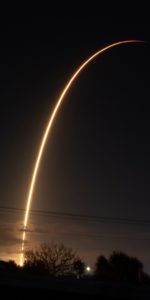
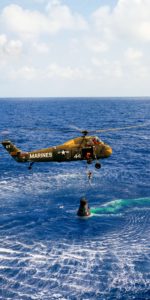
Love the fairing footage